“The entire history of the state of Israel is reflected in the jewellery created during its 65 years of existence,” Iris Fishof writes in the forward of her new book, Jewellery in Israel: Multicultural Diversity 1948 to Present.
Could there be a more dramatic time and place than Israel since World War II? You would expect dramatic art and ornament to come out of Israel’s first seven decades, given its exotic backdrop, rich culture, and the trauma that led to its establishment. The art jewelry in Fishof’s book does not disappoint. It reflects all aspects of Israel’s brief history – hope and heartache, political turmoil, merging cultures, earthy exoticism.
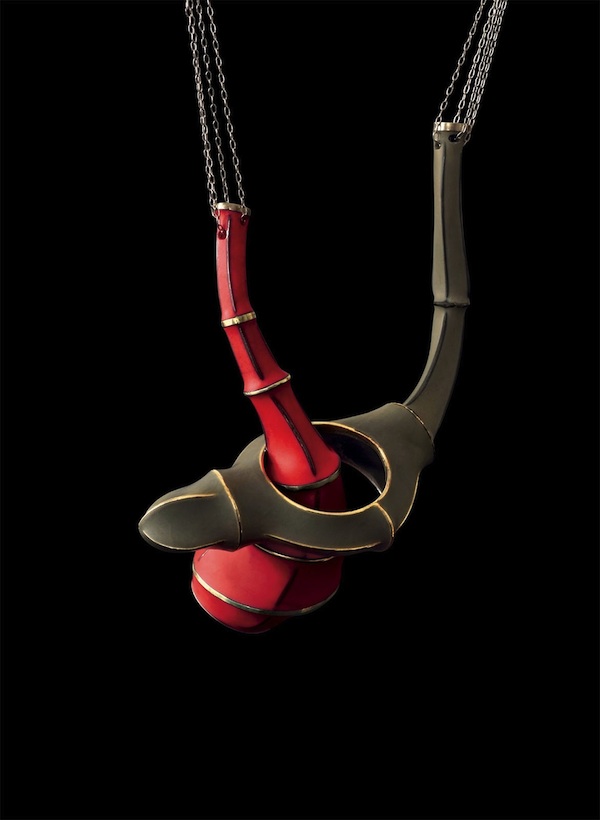
“Israel is a country of immigrants where East and West meet,” Fishof writes. “It is a place whose inhabitants have started life anew, attempting to forge a new, collective identity while still maintaining diversity. Eastern and Western traditions continue to this day to coexist in Israel as part of a pluralistic society. This has greatly affected Israeli culture in general and Israeli jewellery in particular.”
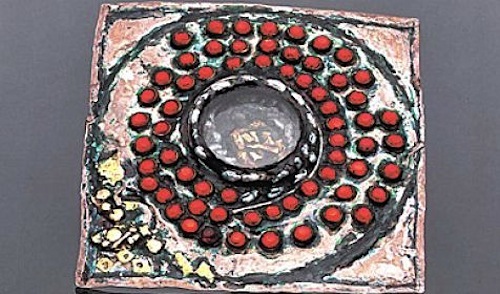
Jewellery in Israel begins with a section on the “melting pot” that was post-war Israel and the influx of ethnic jewelry traditions from Muslim regions, including the jewelry of North Africa. You can see a direct connection between those early chunky, earthy, beaded pieces – layered with symbolism and inscription – and the kind of art jewelry that was being made in Israel by the 1960s.
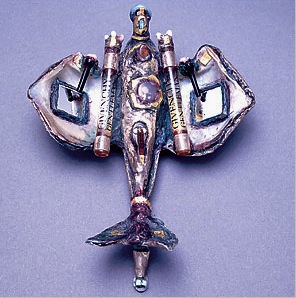
Predictably, it takes a couple decades for the country to settle into a cohesive identity, and for the jewelry made by its resident artists to reflect that.
Things really start to get interesting around the same time art jewelry in Europe and the Craft Movement in the U.S. took off.
Among the first art jewelers to establish an international reputation, Bianca Eshel Gershuni began to make a name for herself in the ’60s and ’70s with bold, expressive, over-sized pieces – bracelets worn on the back of the hand, earrings that partially covered the face – combining gold with tar, feathers, plastic and found objects.
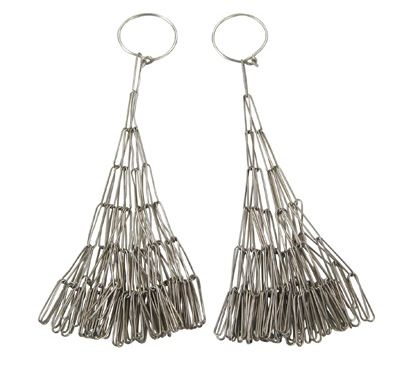
“Like her work in other media, Eshel Gershuni’s jewelry pieces are laden with autobiographic elements, missing personal stories with pagan, folklore and Christian motifs,” Fishof writers. “Her work emits an aura of shamanistic healing, combining tribal elements, such as voodoo feathers, and Christian symbols, such as the cross and the Lamb.”
During the Gulf War, Eshel Gershuni produced a fascinating collection of brooches designed as fish-airplanes with mirrors on their wings.
Vered Kaminski is another prominent Israeli art jeweler who studied with Claus Bury and whose jewelry often seems influenced by Modernist art, especially Alexander Calder, including a series of mobile earrings dangling stones and wood, and a necklace of twisted wire faces “inspired by an ancient Greek necklace” but looking a lot like Calder’s circus figures. You can find a nice collection of Kaminski’s work at Gallery Loupe in Montclair, NJ.
Another Israeli artist featured in the book is Esther Knobel, whose flamboyant and whimsical work is often inspired by childhood memories of growing up in Israel. Like Kaminski and Eshel Gershuni, she favors non-precious materials such as tin, paint and wire.
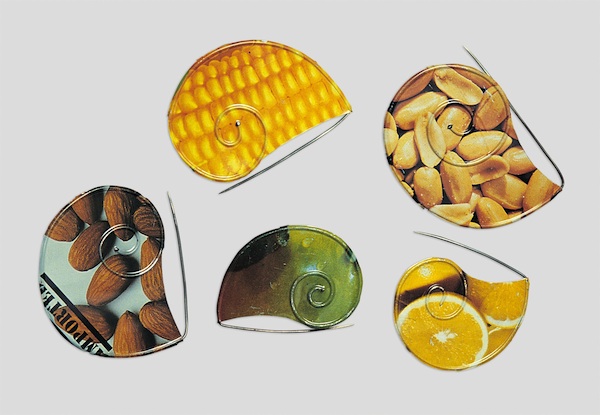
Deganit Stern Schocken, on the other hand, works primarily in silver, and her jewelry reflects her training in industrial design, with hammered pieces that look deceptively simple at first glance but often turn out to have a surprisingly cool kinetic aspect.
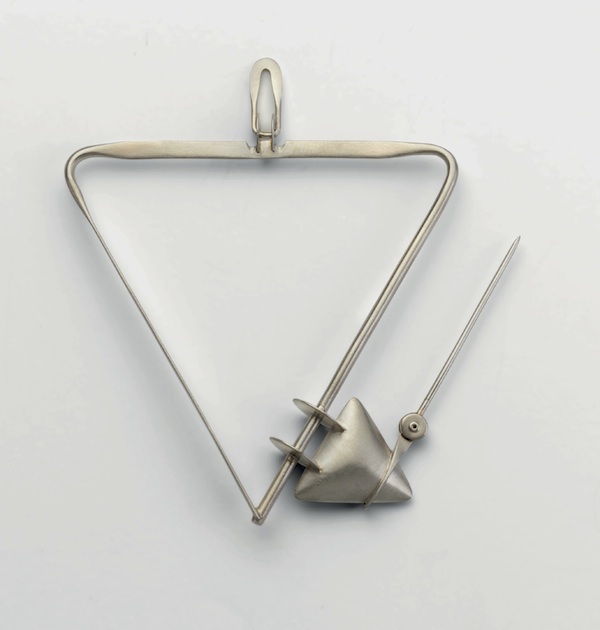
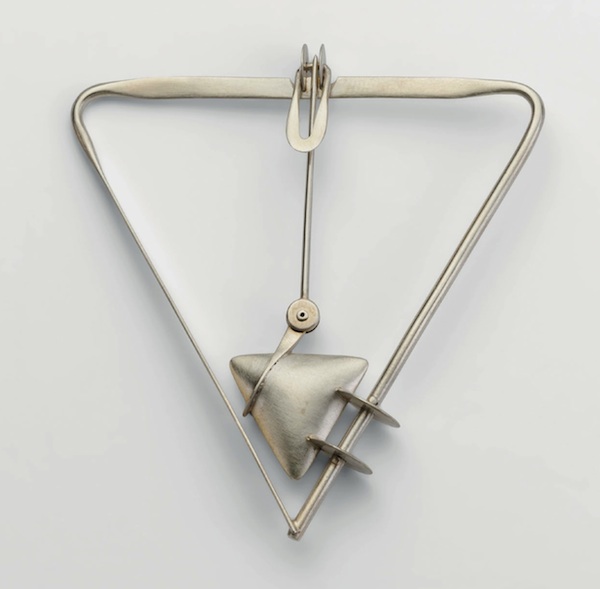
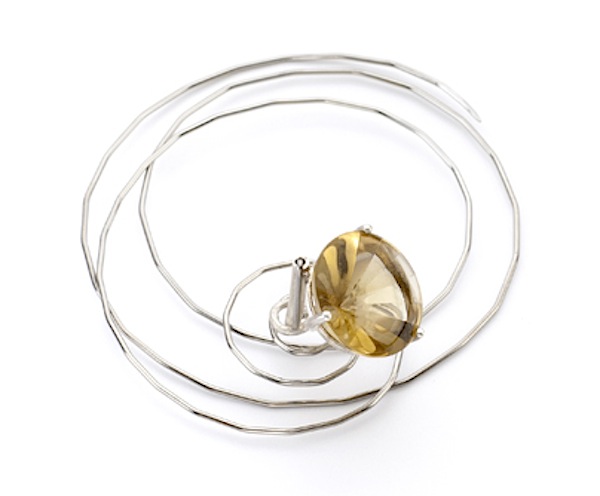
Not so easy to make kinetic jewelry look this elegant. You can find Stern Schoken’s work too at Gallery Loupe, as well as jewelry by a couple other Israeli authors featured in the book, including Attai Chen, who does amazing things with paper and wood, as you can see below.
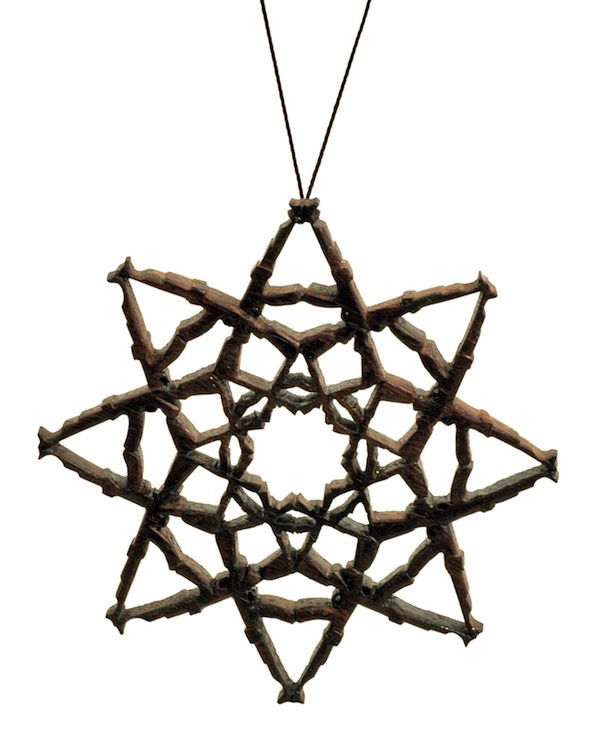
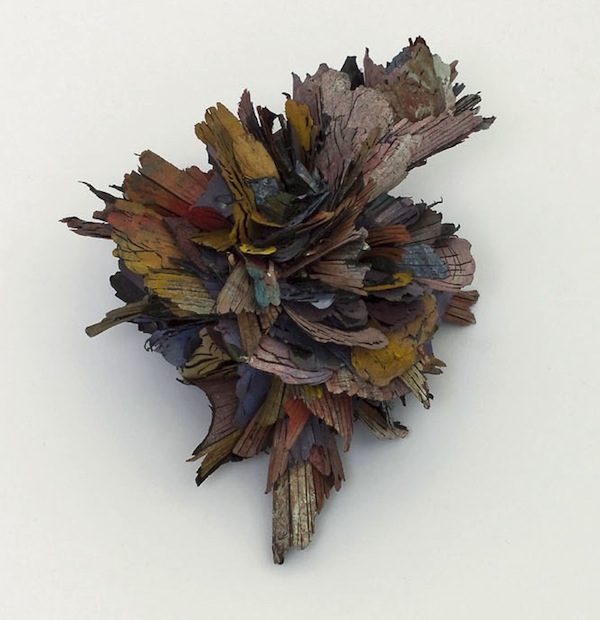
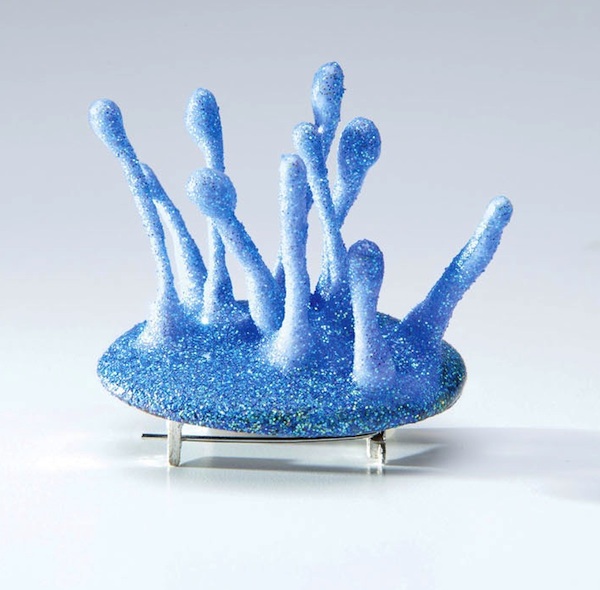
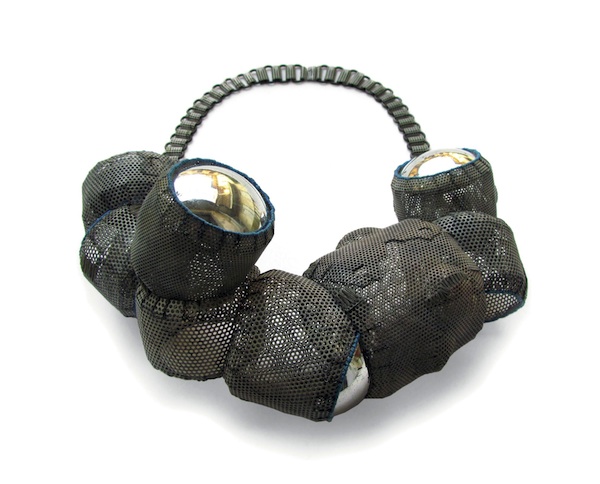
Final two pieces shown are the work of Shirly Bar-Amotz and Dana Hakim, a couple of the talented young Israeli artists Fishof spotlights in the final section of her book. You’ll find all of this and more, beautifully presented and in very interesting context, in Jewellery in Israel.
Related posts
Jewels of North Africa: exotic assemblages
Albert Paley: bodily ornaments
Helen Drutt: advocate of contemporary studio jewelry
Andrea Rosenfeld: jewelry for healing
Related products

